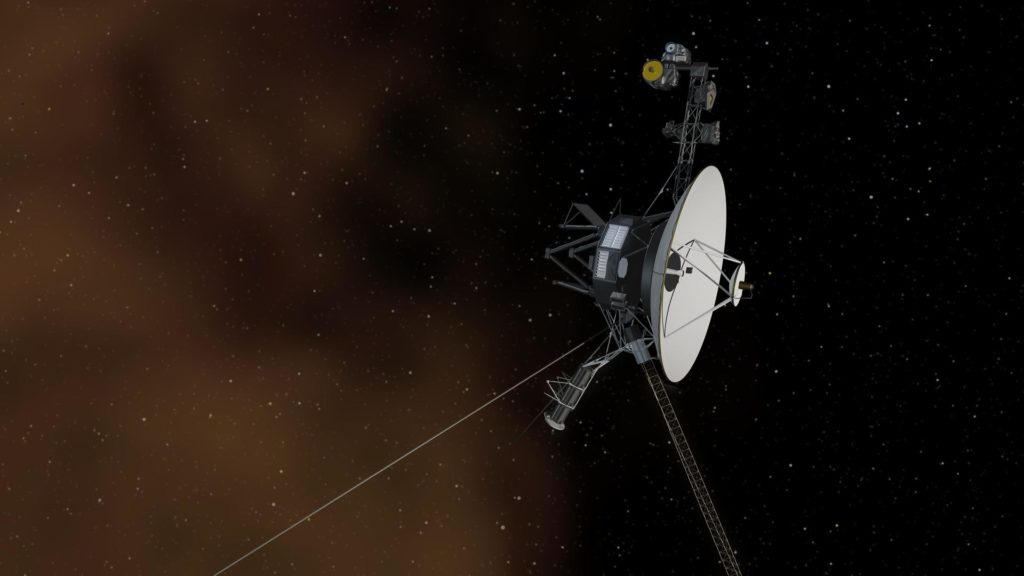NASA‘s Voyager 1 spacecraft, the most distant human-made object from Earth, has resumed normal operations after a pause in communications last month. The probe had unexpectedly shut down its primary radio transmitter, called the X-band transmitter, and had turned on the much weaker S-band transmitter. Due to the spacecraft’s distance from Earth (about 24.9 billion kilometers), this change prevented the mission team from downloading scientific data and engineering status information from the spacecraft.
The X-band transmitter had been turned off by the spacecraft’s fault protection system when engineers activated a heater on the spacecraft. Historically, if the fault protection system detected that the probe had very little power available, it would automatically shut down systems that weren’t essential for keeping the spacecraft flying to maintain power flow to critical systems. But the probes have already turned off all non-essential systems except for the scientific instruments. Therefore, the fault protection system turned off the X-band transmitter and turned on the S-band transmitter, which uses less power.
In early November, the team reactivated the X-band transmitter and then resumed data collection the week of November 18 from the four operating scientific instruments. Now, engineers are completing some remaining tasks to return Voyager 1 to the state it was in before the problem arose, such as restarting the system that synchronizes its three onboard computers, NASA reports.
More Stories
The mission is working with extremely small power margins on both Voyager probes. Powered by the heat from decaying plutonium that converts to electricity, the spacecraft lose about 4 watts of power each year. Mission engineers have had to find creative ways to keep Voyager 1 functioning, and recently switched to a different set of thrusters from what the spacecraft had been using because over the years they had become clogged with silicon dioxide.
This year, the engineering team also fixed a communications problem that was causing Voyager 1 to transmit unintelligible messages to ground control. The mission was forced to shut down a scientific instrument on Voyager 2, and in 1990, Voyager 1 disconnected several instruments after completing its exploration of Jupiter and Saturn.Voyager 1 has provided science with precious data about the solar system and beyond for decades. The probe has had close encounters with Jupiter and Saturn, and discovered two moons of Jupiter, Thebe and Metis, as well as five new moons and a new G ring around Saturn. Voyager 1 and 2 probes, the only ones operating in interstellar space, continue to study particles, plasma, and magnetic fields in this unexplored region.

















